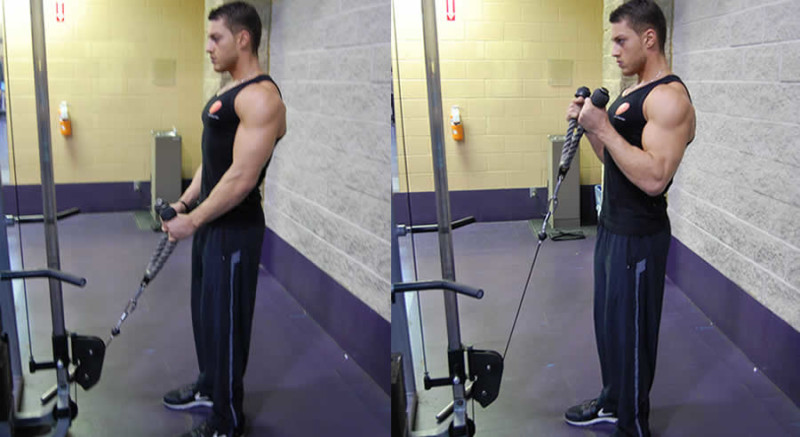If you're looking to build bigger, stronger biceps, cable bicep curls with rope are an exercise you need to add to your workout routine. While dumbbell curls and barbell curls are great for building mass, cable bicep curls with rope provide a unique challenge that can help you break through plateaus and build more definition in your arms.

The Benefits of Cable Bicep Curls With Rope
One of the main benefits of cable bicep curls with rope is that they allow you to maintain constant tension on your biceps throughout the entire exercise. With dumbbell and barbell curls, there is a point at the top of the movement where the tension is released, but with cable curls, the resistance remains constant from start to finish.
Additionally, using a rope instead of a bar or dumbbell allows for a greater range of motion, which can help you target different areas of your biceps. The twisting motion of the rope also engages your forearms and grip strength, making this exercise a great way to build overall arm strength.
How to Perform Cable Bicep Curls With Rope
To perform cable bicep curls with rope, start by attaching a rope to a cable machine at the lowest setting. Stand facing the machine and grasp the rope with an underhand grip, with your hands close together. Your elbows should be at your sides and your feet shoulder-width apart.
Keeping your elbows stationary, curl the rope towards your shoulders, squeezing your biceps at the top of the movement. Slowly lower the rope back down to the starting position, keeping tension on your biceps throughout the entire movement.
Repeat for 3-4 sets of 10-12 reps, using a weight that challenges you but allows you to maintain proper form.

Variations on Cable Bicep Curls With Rope
Once you've mastered the basic cable bicep curl with rope, there are several variations you can try to keep your workouts fresh and challenging:
- Single-arm cable curls: Use one arm at a time to isolate each bicep and prevent muscle imbalances
- Reverse grip cable curls: Use an overhand grip instead of an underhand grip to target the brachialis muscle
- High-cable curls: Attach the rope to the highest setting on the cable machine to target the long head of the biceps
Incorporating Cable Bicep Curls With Rope Into Your Workout
Cable bicep curls with rope can be performed as part of your regular arm workout, or as a standalone exercise on arm day. They can also be combined with other cable exercises like tricep pushdowns and cable rows to create a full-body cable workout.
It's important to remember to warm up properly before beginning any workout, and to stretch your biceps and forearms after you're finished to prevent injury and aid in recovery.
Conclusion
If you're looking to build bigger, stronger biceps and improve your overall arm strength, cable bicep curls with rope are an exercise you don't want to skip. By providing constant tension and a greater range of motion, this exercise can help you break through plateaus and build more definition in your arms.
So next time you hit the gym, give cable bicep curls with rope a try and see how they can take your arm workouts to the next level.